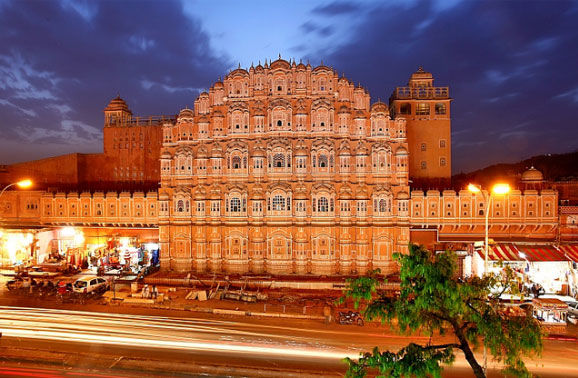
Jaipur owes its name to Maharaja Jai Singh II, a skilled warrior and astronomer who ascended to power at just 11 years old following his father’s demise. His lineage traces back to the Kucchwaha Rajput clan, traditional rivals of the Sisodia Rajputs ruling from Mewar. Jai Singh’s alliance with the Mughals elevated the Kucchwahas’ stature in Rajasthan, culminating in their dominance over Udaipur and Jodhpur.
Establishing his capital around the majestic Amber Fort, Jai Singh enlisted the expertise of Vidhyadhar Bhattacharya, a Bengali architect, to design Jaipur according to scientific principles outlined in ancient texts. Despite initial water scarcity issues, Jaipur flourished under Jai Singh’s rule.
Post-Jai Singh’s demise in 1744, internal conflicts weakened the kingdom, allowing neighboring Rajput states and the Marathas to seize territories. However, Jaipur’s core remained intact, enduring British colonization. Maharaja Ram Singh’s symbolic gesture of painting the city pink in 1876, symbolizing hospitality, earned Jaipur the moniker “Pink City.” His efforts also included the construction of Ramgarh Lake to address water needs.
In the 20th century, under Man Singh II’s reign, Jaipur saw infrastructural developments, including the construction of civic buildings. Post-independence, Jaipur became the capital of Rajasthan after merging with neighboring princely states.
 Jaipur owes its name to Maharaja Jai Singh II, a skilled warrior and astronomer who ascended to power at just 11 years old following his father’s demise. His lineage traces back to the Kucchwaha Rajput clan, traditional rivals of the Sisodia Rajputs ruling from Mewar. Jai Singh’s alliance with the Mughals elevated the Kucchwahas’ stature in Rajasthan, culminating in their dominance over Udaipur and Jodhpur.
Establishing his capital around the majestic Amber Fort, Jai Singh enlisted the expertise of Vidhyadhar Bhattacharya, a Bengali architect, to design Jaipur according to scientific principles outlined in ancient texts. Despite initial water scarcity issues, Jaipur flourished under Jai Singh’s rule.
Post-Jai Singh’s demise in 1744, internal conflicts weakened the kingdom, allowing neighboring Rajput states and the Marathas to seize territories. However, Jaipur’s core remained intact, enduring British colonization. Maharaja Ram Singh’s symbolic gesture of painting the city pink in 1876, symbolizing hospitality, earned Jaipur the moniker “Pink City.” His efforts also included the construction of Ramgarh Lake to address water needs.
In the 20th century, under Man Singh II’s reign, Jaipur saw infrastructural developments, including the construction of civic buildings. Post-independence, Jaipur became the capital of Rajasthan after merging with neighboring princely states.
Jaipur owes its name to Maharaja Jai Singh II, a skilled warrior and astronomer who ascended to power at just 11 years old following his father’s demise. His lineage traces back to the Kucchwaha Rajput clan, traditional rivals of the Sisodia Rajputs ruling from Mewar. Jai Singh’s alliance with the Mughals elevated the Kucchwahas’ stature in Rajasthan, culminating in their dominance over Udaipur and Jodhpur.
Establishing his capital around the majestic Amber Fort, Jai Singh enlisted the expertise of Vidhyadhar Bhattacharya, a Bengali architect, to design Jaipur according to scientific principles outlined in ancient texts. Despite initial water scarcity issues, Jaipur flourished under Jai Singh’s rule.
Post-Jai Singh’s demise in 1744, internal conflicts weakened the kingdom, allowing neighboring Rajput states and the Marathas to seize territories. However, Jaipur’s core remained intact, enduring British colonization. Maharaja Ram Singh’s symbolic gesture of painting the city pink in 1876, symbolizing hospitality, earned Jaipur the moniker “Pink City.” His efforts also included the construction of Ramgarh Lake to address water needs.
In the 20th century, under Man Singh II’s reign, Jaipur saw infrastructural developments, including the construction of civic buildings. Post-independence, Jaipur became the capital of Rajasthan after merging with neighboring princely states. 